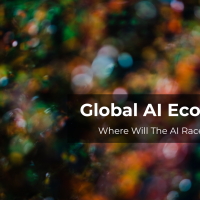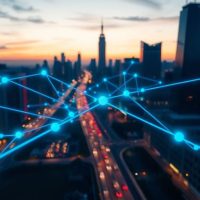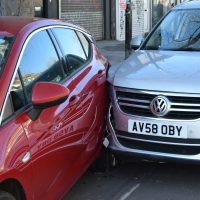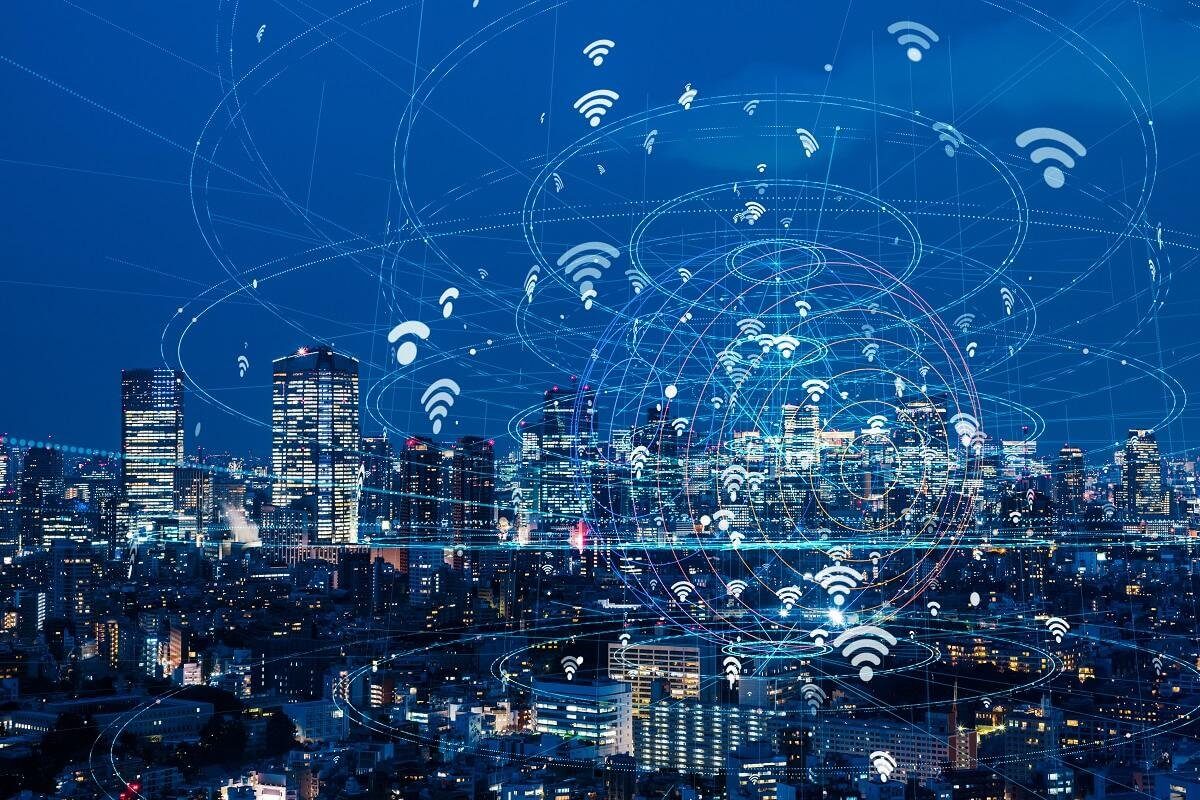
In a 4IR context, cities will be one of the key drivers in the adoption, development, and preparation for the upcoming disruption. And for the role they must play in the near future, the development of smart cities is essential to keep abreast of technological development. The race is on, so let’s take a look at the top 6 technology trends in smart cities to see where all these are heading.
The striking characteristics of the times we live in, in term of cities, is the degree of interconnectedness and interdependence that exist now in the world. Major worldwide metropolis the likes of London, Berlin, Beijing, etc are following a trend started in Silicon Valley in the 80s, and are embracing this new technology driven reality. These ecosystems are mostly driven by high-performance data supercomputing, using various applications of machine learning, artificial intelligence, Blockchain tools and techniques, IoT, high-speed wireless connectivity, etc.
Smart cities are, thus, a thriving market and it is only thought to keep expanding as more cities embrace their potential. In fact, the smart cities market will be worth $833bn by 2030, according to GlobalData, a data and analytics company. The company’s report, ‘Smart cities – Thematic Research’, reveals that by 2050, nearly 70% of the world’s population will live in cities compared to the current 50%. In addition, increased urbanization which is already causing infrastructure problems, will drive the creation of smart cities.
Listed below are the key technology trends in smart cities, as identified by GlobalData.
Cyber threats
Smart cities increase the perceived risk of cyberattacks on critical infrastructure. Over 40 US towns and cities suffered attacks in 2019, with Baltimore a notable casualty. It was attacked through ransomware, which shut down the majority of the city’s servers and some government applications.
The increasing connectedness within smart cities means that the impact of attacks could be devastating. Atlanta was attacked in 2018 and found putting things right to be expensive. The Securing Smart Cities initiative hopes to increase collaboration between cities, companies, governments, other not-for-profit initiatives and individuals around the world as a defense against cyberattacks.
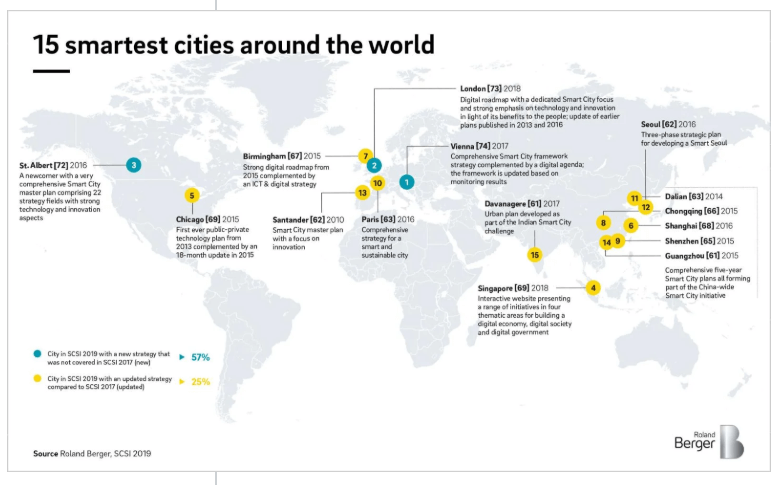
Digital twins
A digital twin is a digital representation of a physical asset that promises a single source of the truth and can be combined to build an in-depth view of entire systems, from traffic to the impact of construction and roadworks. This year will see more companies announce a greater return on investment (ROI) on digital twin projects.
The risks and opportunities of AI
Artificial intelligence (AI) and machine learning (ML) adoption will bring both risks and opportunities for smart cities, but few are ready for the societal impact of either technology. A September 2019 study by the Oliver Wyman Forum analysed 105 cities worldwide using four criteria: the quality of their planning and preparation for the impact of AI; the ability to execute; the quality of talent and education; and the city’s overall momentum. The forum examined 250 city vision and planning documents and found that most cities do not address major societal changes driven by AI and other technologies. They focus on smart city developments and on opportunities, but mainly ignore or downplay risks.
Legal disputes slow 5G rollout
5G connectivity is being talked up as the catalyst that will create smarter cities. It is faster than 4G, has wider data bandwidth, and lower latency which should positively impact the digital experience. Yet 5G take-up has been patchy. There has been traction in Asia, but progress in some parts of the US and in European cities has been slower. The US Federal Communications Commission (FCC) has tried to ramp up local city adoption, accelerating approval times and capping the fees cities can charge telecoms companies to install small 5G cells on city-owned lampposts, traffic signals, or other street furniture.
Greater interoperability
Smart cities with ambitions to improve services such as traffic management, air quality and city planning will rely on interoperable IoT. City networks have evolved bit by bit rather than being designed. Somehow, the networks work effectively, but not as efficiently as they should. The challenge for cities is to integrate older data into cloud services, introduce mobility, waste management, energy, air pollution, social services, and e-health solutions, manage a ‘babel’ of data storage protocols, and grow departmental collaboration, all with constant downward pressure on budgets.
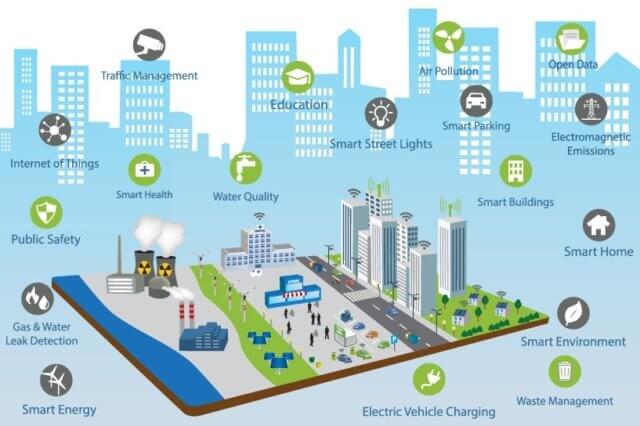
Surveillance tech
A September 2019 report by the Carnegie Endowment for International Peace found that at least 75 countries around the world are now using AI tools, including computer vision, to monitor citizens’ activities. Huawei’s technology is most used, by 50 countries, with IBM’s used by 11 nations. There is a strong possibility of a backlash against smart city technology if citizens believe a surveillance culture is being implemented, using threats of crime or terrorism as an excuse.
Cities are the most vivid, physical evidence of a nation’s soul and will. All economic, social and political issues are first acknowledged -and to its extent felt- in these massive human ecosystems. In fact, the interactions happening in cities decide the overall health of a nation’s economy while education, services, connectivity and infrastructure tend to be more advanced in these ecosystems than anywhere else in the country. The rise of smart cities is just the logical next step in urban infrastructure as new technology will allow for better connectivity, administration and quality of life in these massively populated concrete jungles.

Hernaldo Turrillo is a writer and author specialised in innovation, AI, DLT, SMEs, trading, investing and new trends in technology and business. He has been working for ztudium group since 2017. He is the editor of openbusinesscouncil.org, tradersdna.com, hedgethink.com, and writes regularly for intelligenthq.com, socialmediacouncil.eu. Hernaldo was born in Spain and finally settled in London, United Kingdom, after a few years of personal growth. Hernaldo finished his Journalism bachelor degree in the University of Seville, Spain, and began working as reporter in the newspaper, Europa Sur, writing about Politics and Society. He also worked as community manager and marketing advisor in Los Barrios, Spain. Innovation, technology, politics and economy are his main interests, with special focus on new trends and ethical projects. He enjoys finding himself getting lost in words, explaining what he understands from the world and helping others. Besides a journalist, he is also a thinker and proactive in digital transformation strategies. Knowledge and ideas have no limits.






